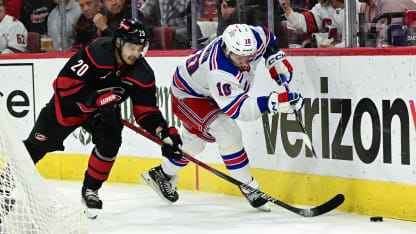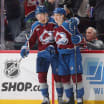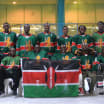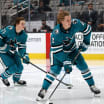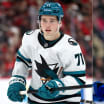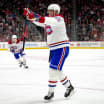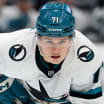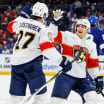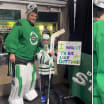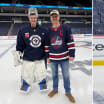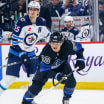In the NHL, the majority of the game is played along the boards, so coaches talk a lot about the importance of wall play with young players when they’re breaking into the League.
Not all forwards play center right away in the NHL. Many top prospects come into organizations as centers but are moved to the wing early on in their careers. Some come in as wings and switch to center later. And looking at defensemen, it’s also important to make sure their touches are clean off the wall, they get their heads up and they have pre-puck awareness where they’re making multiple head checks, different things like that.
So, having young players become comfortable along the walls is critical, especially in the NHL where there’s a lot of top-down pressure now, and there are lots of pinches and the plays are just going to happen a lot quicker. Being able to accept a puck, have that pre-puck awareness before you get the puck and handle it cleanly off the boards, is very important.
When I was coaching or in player development, we’d look at video of different players around the NHL. We’d look at Los Angeles Kings or Anaheim Ducks players, but I remember one time where we used Artemi Panarin of the New York Rangers as an example.
Here’s a goal-scorer, somebody you look at from the offensive side. But when you watch Panarin’s wall play on a defensive-zone breakout, what stood out with him is when most guys are taking one or two head checks, he was taking four or five.
He’s taking that mental picture and he’s seeing where everybody is, so he knows where the forecheck is coming from. Let’s say he sees two forwards in on the forecheck, now he needs to read F-3 -- the third forward or high forward on the forecheck -- and read where the defenseman on the strong side is pinching down. So, by taking those pre-puck checks, when he gets the puck, he knows exactly what he needs to do with it.
So, we’d show our young forwards specific examples of Panarin. Then, we would take it onto the ice, and we’d work on their puck collections: making sure they take the head checks, making sure when they accept the puck their head gets up right away, their feet get moving and they understand where the pressure is coming from.
If the pressure comes from F-3, they might be able to roll up the wall and out of the zone. If the pressure is coming from the defenseman, now they’ve got to build a wall. They need to protect the puck and make the proper play, whether it be a flip out of the zone, whether it be to try to hit the center with a pass, or you might have the weak-side wing slashing across.
Teams usually commit two forwards on the forecheck, so when the puck along the way -- let’s say it’s rimmed -- you need to read where the F-3 is or is the pressure coming from the defenseman so you can make the play.
Even when I was an assistant with the Ducks, we’d go out before practice and work on wall play with young players. We would work on defensive-zone wall play, where you’re breaking pucks out, but also puck collection in the offensive zone.
The defenseman gets the puck up the boards, or the net-front puck is rimmed around the boards, and for you to collect it you have to see where everybody is right away. So, it’s being able to collect the puck with your back kind of to the play, get it on your forehand or backhand, get your head around so you can see where your teammates are, and make a play.
You might not have anybody open, so now it’s like Mathew Barzal of the New York Islanders or Connor McDavid of the Edmonton Oilers, where they’re able to get off the boards by moving their feet. That allows them to open space for cutbacks, which buys them time.
All those skills will help a young player generate that extra second or half-second to make a play.
Some forwards have played center throughout their development but move to wing when they initially play in the NHL. But whether you’re a center or a wing, these are important skills to work on.
For defensemen, on breakouts, whether the puck is rimmed around the boards, or it comes from a pass from the other defenseman or the goalie, being able to collect the puck and get your head up right away is essential so they can make the next play.
If you watch different teams, right now a lot are using the weakside and a lot of rims around the boards. If you look at the Buffalo Sabres, the Kings and some other teams, they use the rim quite a bit.
I was watching the Ducks play against the Vancouver Canucks last week and saw an example of this on the goal scored by Canucks forward by Kiefer Sherwood. Danton Heinen collected the puck on the wall, he chipped it back and now they enter the neutral zone with a lot of speed and back up Anaheim’s defense. And it’s all because of one good puck collection off a rimmed puck.
A lot of these players are so skilled they can learn this quickly. Sometimes in the American Hockey League, they might actually be better at it.
But it usually takes time and, like anything in development, you need to put the players through reps. It starts in practice where they’re collecting pucks and making plays initially when they’re not under pressure. Then, you put pressure on them and then you put more game-like pressure on them.
Then, finally they can bring it to a game, and they can add.
